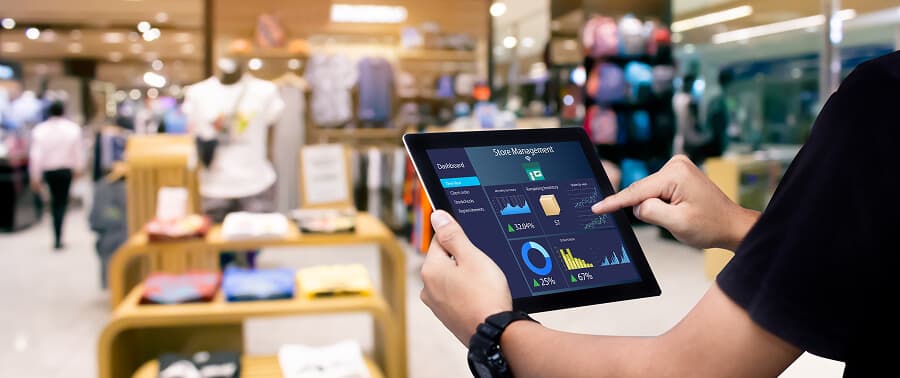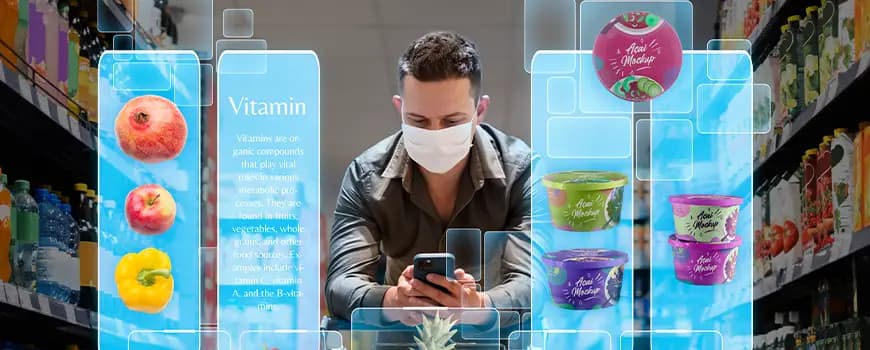Mastering an Integrated Omnichannel Inventory Management for Grocers
21 January 2021


Rahul Ravi
Marketing and Communications ManagerWith over 2 years of experience in business administration across multiple industries, Rahul Ravi was responsible for enhancing the distribution of leading retail companies through identifying...
With grocery transitioning more rapidly than ever into a consumer-driven industry, issues such as determining the best product mix and inventory size are strategically important for a grocer looking to cash in on e-commerce sales. With ever-shortening lead times, item basket customizations, and year-round discounts, inventory management plays an even greater role today than ever.
When customer behavior shifts, so must the grocer’s. Yet, over time, one thing remains the same at the core: inventory. Which raises the inevitable question: how do today's grocers effectively and efficiently manage inventory at their stores?
Smarter Inventory Management for Next-gen Grocers
The key behind smarter grocery inventory management is straightforward: having enough stock, at the right price, within your stores to keep the supply-demand wheel spinning.
We live in an omnichannel-driven world, where shopping habits are ever evolving. Online customers who choose not to wait for delivery are expecting to be able to pick up their order in the store. Gen Zers may choose to buy directly from an Instagram, or other social media, image of their favorite grocer without ever visiting a store’s website.
In such a scenario, tracking what's coming in and leaving your inventory would be a crushing challenge and failure to manage and track this would leave a void in your inventory. It is also likely to put a strain on your warehouse unless you have implemented a omnichannel system with workflows to keep your inventory management streamlined, automated and effective.
How can you get there? By using an effective inventory management system that easily transfers and manages inventory between all sales channels and accommodates a better user experience, you can blend brick-and-mortar shops and ecommerce sites, with little to no logistical challenges.
Integrate your supply chain
A seamless omnichannel inventory management system enables multiple ends of your supply chain to be linked. Bringing together different functions such as procurement, finance, channel management, shipping and returns under a single enterprise management system can keep your inventory operations and data transparent, effective and efficient.
Orders should be synchronized across all distribution channels simultaneously to manage your supply chain effortlessly. An integrated supply chain can help you ensure that the correct inventory quantity is listed throughout all distribution channels.
Maintain accurate visibility
More than 30 percent of companies have encountered circumstances in which they market goods that were shown as in-stock but were not in inventory.
Therefore, it is extremely beneficial to maintain the data in an inventory management system that links all distribution channels in order to retain true visibility. Inventory levels are modified for all channels in real-time so that you know exactly what is sold and when, eliminating the issues related with marketing goods that are misrepresented within inventory. More significantly, this function decreases the probability of inventory being out of stock or under stocked.
Improve procedures for your return
It's as important to develop, and invest in, a comprehensive returns strategy as it is to invest in a successful omnichannel management solution. You need to be able to predict your customers’ actions, their experiences, and how they affect your bottom line.
According to “The State Of Online Returns In 2018”, which calculated the comfort level of customers regarding a grocers’ return experience, 72% of customers said they will spend more and buy more regularly with grocers who make their return experience quick, convenient and painless.
Encourage returns in-store
Encouraging in-store returns is an excellent opportunity to reap the benefits of incremental in-store sales and offset the expense of return shipments. With such an option, you can also extend your customers’ ability to find, and buy, what they are looking for and likely increase the size of their basket.
Even if a customer does not make additional purchases, you still have the ability to sell the returned item in-store again. You would have to scan the item back into inventory and re-list it online if you didn't provide the option to return to the store.
Inventory of stock around centers
A centralized inventory management solution makes it easier to track inventory as it passes through various distribution centers, particularly if you use barcode scanning.
Barcode scanning can be performed at inventory receipt to automatically upload item information to the inventory management system. Barcode scanning integrated into an inventory management system gives you visibility to inventory movement as it occurs, regardless of channel. Today, competencies such as this are table stakes as inventory levels fluctuate between locations and selling channels, especially for fast-moving items.
An omnichannel strategy is crucial to stay relevant in today's grocery world. It is important that grocers have the right inventory levels available in all the channels that customers choose to shop.
Grocers can create an integrated omnichannel inventory management platform with the right software solution and a superior customer service experience, designed for full visibility. With SimpleRetail, you can deliver a rewarding shopping experience while building efficiencies across channels. SimpleRetail is uniquely positioned to address evolving grocery challenges as businesses integrate brick-and-mortar stores with their digital stores and ecommerce.
If you'd like to explore the possibilities for your business within the new normal, schedule a demo today.












